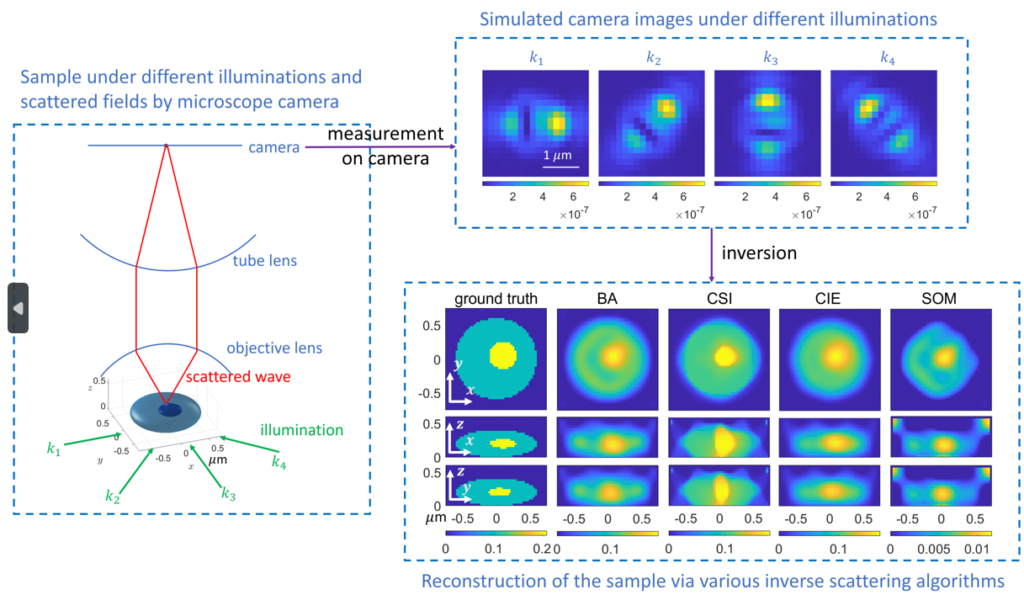Yingying QIN
When a sample is illuminated by electromagnetic waves, the particles in the sample will re-orient themselves to get aligned with the incident field and radiate electromagnetic waves at the same frequency. This procedure is called scattering and it is related to the refractive index of the sample. We have described this process with an accurate model to simulate the intensity of the scattered field collected by a coherent dark-field microscope camera. Given the collected data, we can retrieve the physical parameters of the object by inverting this scattering process with inverse scattering algorithms. Such algorithms have been well developed and widely used in imaging task within microwave frequency range. In our recently published article in the elite Inverse Problems, we adapted several algorithms to the 3D RI reconstruction task of the sample with dark-field coherent microscopy data where phase and polarization information has lost. We have also tested several factors that may affect the inversion performance, such as the initial value of RI, the estimated location of the substrate and so on.
For more details, check out the following article:
Qin, Yingying, Ankit Butola, and Krishna Agarwal. “3D refractive index reconstruction from phaseless coherent optical microscopy data using multiple scattering-based inverse solvers—a study.” Inverse Problems 40, no. 1 (2023): 015003. 🔗
